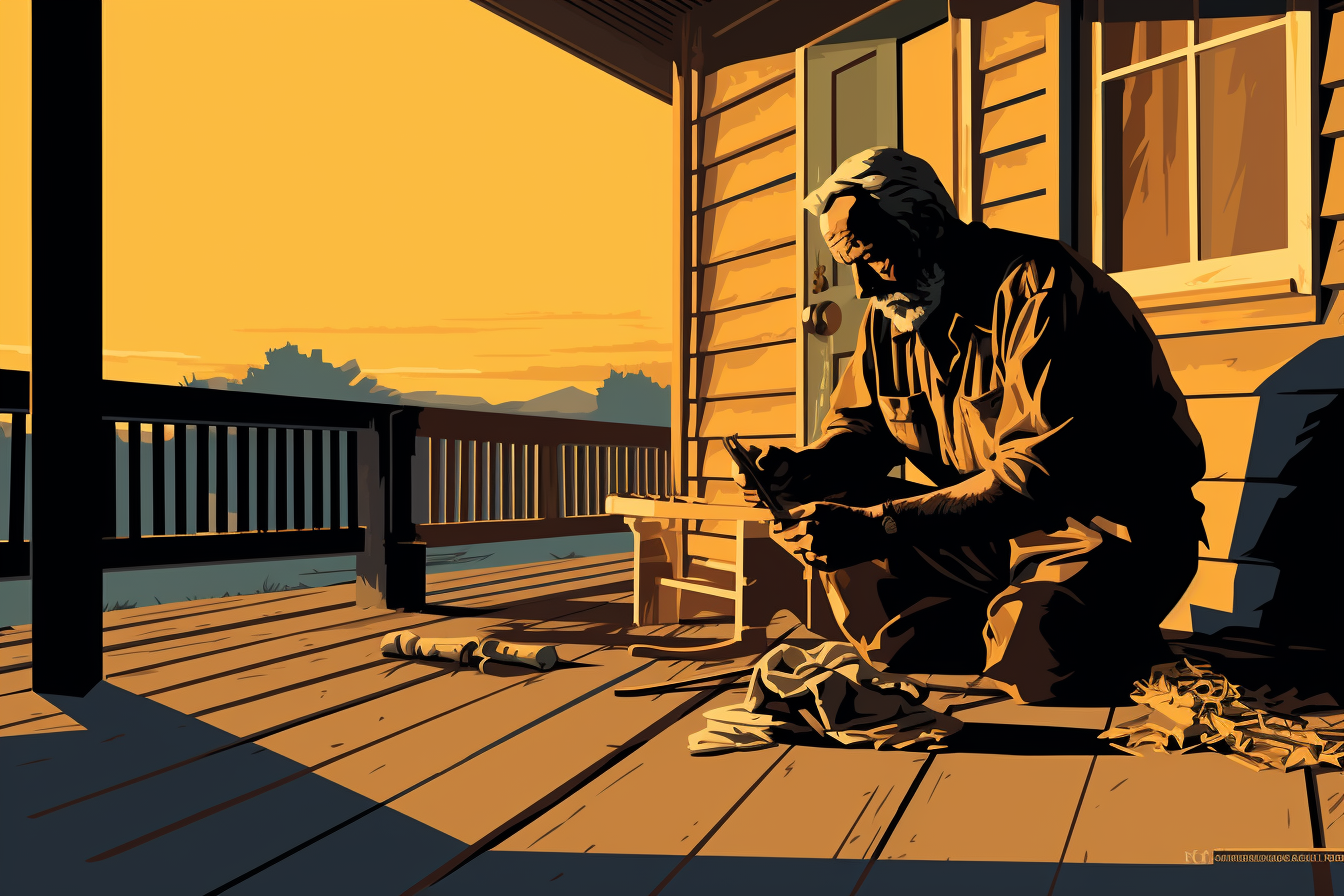What is Whittling? Everything You Need to Get Started
May 25, 2023

As an Amazon Associate, Modded gets commissions for purchases made through links in this post.
Whittling has been a hobby of men since humans first learned how to fashion tools from wood. Once the favorite pastime of the rugged frontiersman, whittling has become more accessible to every kind of man in the modern world. If you’re asking, “What is whittling” and wondering how to get started, you’ve come to the right place.
Find A Beginners Whittling Kit
The first thing you need to get started is a whittling kit. After all, what is whittling without a whittling knife? In the old days, people caved away with any knife they had on hand — with any kind of wood they could find. Modern carving and whittling kits are more specialized for cutting through wood.
Your standard whittling kit comes with multiple knives, each with its own purpose. These knives are forged using modern techniques so they keep their edge quickly. These knives all have different shapes and sizes.
If you’re starting on a project, you’ll want to use a bigger knife to cut away excess wood to get the desired shape. Once you’ve done that, you’ll use the smaller knives for more precision carving. The really small knives are for when you’re working on the fine details of your project.
Although today’s knives can keep an edge for much longer, they still require regular sharpening and maintenance. Wood is hard to cut through, after all. So think about investing in a knife sharpener or sharpening stone.
Whittling kits come with other handy items like gloves or finger guards. If not, finding some is a good idea. Since you’ll be working with sharp objects, it’s always best to have some protection for your hands — especially for beginners.
Best Wood for Whittling
Most beginner whittling kits also come with a few wood blocks to get you started. While you could go out and start carving from lumber or any loose wood you can find in your backyard, different kinds of wood are better for whittling than others.
Naturally soft wood, like silver birch, willow, sycamore and lime, are much easier to carve — allowing you to make finer project details. You can purchase blocks of these in bulk from your local store or online.
If you choose to use wood found in the wild, you can use tree identification apps if you’re still learning to recognize different tree species. Using any old branch or piece of wood for whittling is possible but might be harder for beginners. Try to find fresh or wet wood — moisture makes it softer.
Only use pieces that seem to have been on the ground for a while. These are usually much more difficult to cut through — a beginner could damage their whittling knife or, at worst, injure themselves trying to carve.

How to Carve
If half of what is whittling is finding knives and wood to work with, the other half is learning how to carve. Hacking at wood with reckless abandon will not only waste a perfectly good knife, but you’re also liable to cut yourself badly.
Just like how you might cut meat and vegetables differently in the kitchen, there is a certain way you should cut to carve wood. You would use these different styles depending on what you want to do with your project.
One general rule of thumb is always to point the knife’s edge away from your hand. This will significantly reduce the likelihood of cutting yourself.
Rough Cutting
Most of the time, you want to begin carving your block of wood with straight, rough cuts. Hold the block firmly with your off-hand and begin cutting down the length of the block. Make the cuts long but not deep. You only need to get the wood to the correct size and shape while removing the rough surface.
Paring
After determining that your wood block is the right size, you can start refining its shape into what you want it to be. Paring is one of the classic methods of whittling. You want to position the knife’s edge towards you for this cut while gripping the wood from below. Brace the thumb of your knife hand on one end of the wood and the blade itself on the other end.
Pull the knife towards you by pushing against the back of the wood using your thumb. Make sure you keep a tight grip on the wood with your other hand. Using this grip gives you greater control over the knife, making cutting the wood into the shape you want to make it easier.
Push/Thumb Cutting
If you’re working with harder wood or trying to smooth out a corner, sometimes the pull or push strokes don’t work. If that’s the case, you can use both thumbs to cut for more leverage. While gripping the wood with your off-hand, put both thumbs on or near the back of the knife, with the edge facing the wood.
Using both thumbs, push the knife towards or away from you. This kind of grip gives you more strength when cutting and better control — allowing you to make more precise cuts.
What Can You Whittle as a Beginner?
Now that you know the answer to the question “What is whittling”, you might be wondering what kind of projects you could try. Doing simple, broad shapes is the best way to practice while you get the hang of your whittling style.
Making simple toys like fish or dinosaurs for the kids is an excellent way to test your skills. As you get better, you can start adding more details to your projects, like making Viking figures or totem poles. Remember to take it slow and have fun.
Know Everything You Need to Get Started
If you’re the kind of guy who loves to make things with his own hands, whittling might be your hobby. Getting started can be challenging, but there’s nothing that you can’t achieve with practice. Using the right tools and the right methods will make you a master whittler in no time.






